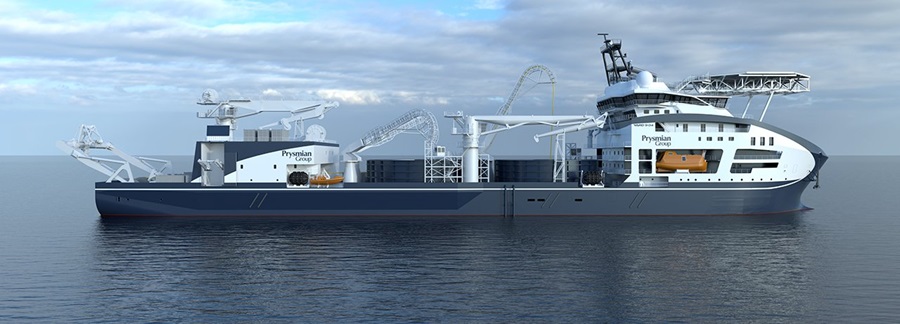The Prysmian Group is set to launch the most advanced cable layer in the world, Leonardo Da Vinci
As world leader in the energy and telecom cable systems industry, the Prysmian Group is set to launch the most advanced cable layer in the world. The vessel, recently named Leonardo Da Vinci, will be added to the group’s already strong cable laying fleet in the second quarter of 2021 and incorporates innovative features that required the new battery power class notation to be developed by RINA, a global leader in marine classification.

The state-of-the-art cable laying vessel, with its dual engine rooms and hybrid power, can operate safely in winds up to 130 kph. It has a capstan of exceptional mechanical capacity for cable pulling tension up to 100 tons and can lay cables up to a depth of 3,000 metres.
The new vessel is being built by Vard, a Fincantieri company, at one of its shipyards in Norway, with the hull being fabricated at Vard Tulcea in Romania. RINA has carried out a full appraisal of the construction drawings and plans and is carrying out statutory and class certification of the vessel.
The vessel is designed to meet Special Purpose Ship standards, in order to be capable to carry up to 120 personnel and the requirements for the new RINA DP 3 notation (2017 edition) and the IMO 1580 guidelines for Dynamic positioning, in order to guarantee the cooperativity of the vessel even in the event of fire or flooding of one of the engine rooms. The unique design led RINA to consider a further class notation to cover the hybrid propulsion plan installed on board.
The battery power notation has been developed to cover the vessel, which has dedicated lithium batteries to ensure its dynamic positioning even in the worst-case scenarios. In case one of the engine rooms is no longer available, the hybrid propulsion plant and its sophisticated automation allows the batteries to take over the feeding of one thruster for a minimum of 15 minutes, so it can continue to work safely. Batteries can also provide ‘peak shaving’ to reduce emissions.
Paolo Moretti, EVP Marine Strategic Development at RINA, said: “We worked closely with Prysmian and Vard to create the Battery Powered notation, which together with the Green Plus notation, will certify the sustainability ambitions of the owner. We have specifically analysed this innovative arrangement to ensure the vessel is meeting the same level of safety as the DP3 notation.”
The contract for the ship classification, which was awarded to RINA last year, includes certification of all materials throughout the supply chain; from steel plate, through welds and all on board cable laying equipment.
Moretti concluded: “This is an exciting project for RINA, which is well placed to meet the needs of such an advanced vessel. Prysmian and Vard have gone to extraordinary lengths to add cutting-edge features that sets the ship apart and the new notations reflect how this industry is progressing. To meet the needs of the project, alongside dedicated project management, we have around 20 people working on the project, plus personnel on site in Romania and Norway.”
Source: Rina